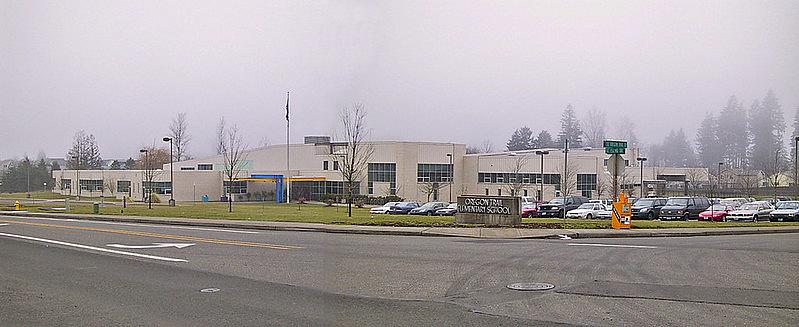For Oregon's black and brown students, white supremacy still reigns In education

From its founding, Oregon has embodied white supremacy. The colonial government welcomed white settlers to the state, handing out swaths of land just for showing up. It was a much different story for black people: they were not allowed. If they broke those rules they received lashes and whippings, driving them physically out of the state. White settlers fought bloody battles with American Indians from the California border to the Snake River. And Japanese immigrants who made the Pacific Northwest state their home were rounded up and sent to internment camps during World War II. For many Oregonians, this is all ancient history. Cities like Portland and Eugene are known around the country for their liberalism and, more recently, their outspoken opposition to the anti-immigrant policies of President Trump. But if you talk to communities of color in the state, they will tell you that discrimination continues in other ways, including education.
In January, the Oregon Secretary of State released an audit of Portland Public Schools and the Oregon Department of Education. The report found that Portland Public Schools – the largest district in the state – spends more per pupil than similar districts across the state, yet systematically fails students of color and students from poorer homes. Members of these communities will tell you this is no surprise. In my short time as a reporter in Oregon covering race, identity and demographics, I have reported on two schools within PPS with programs focused on closing the achievement gap between white students and kids of color. One was threatened with eviction and, at the other, the school’s year-round calendar program is still at risk of being terminated at the end of the 2019-2020 school year. Educators and parents of students of color alike will tell you the odds are stacked against these students in a state that was created to exclude them.
However, like the rest of the country, Oregon is becoming browner. What does this mean for the growing population of children of color in the state?
The Oregon Department of Education collects data on every student. For data about youth that are no longer enrolled in school or are at risk of dropping out, the Oregon Youth Development Council collects information in partnership with more than 200 community organizations across the state that run programs focused on these populations. Oregon Higher Education Coordinating Commission is creating a statewide longitudinal data system that will track all students, including secondary school, post-secondary and employment records. I will also use data from the Oregon Youth Authority to illustrate the state’s school-to-prison pipeline. For my 2019 Data Fellowship project, I seek use these data sources to compare the graduation rates between districts with similar student population demographics to see how achievement varies.
There will be stories that don’t fit into the narrative that students of color are underachieving, such as the Woodburn district. The student population there is 82 percent Latino with an 89 percent on-time graduation rate – much higher than the state average, which ranked next to last in the country in 2017. Overall, I would like to examine the factors that contribute to low achievement for students of color, including forces within a school’s control, such as higher rates of discipline, lower attendance and more frequent teacher/principal turnover. That data is available from the Oregon Department of Education down to the school. My analysis will also examine societal factors connected to Oregon’s long history of disinvestment and discriminatory policies toward communities of color – factors such as poverty and homelessness.
Any look at the failings of Oregon schools has to include the shortcomings of the Oregon Department of Education, the state agency tasked with supervising the state’s nearly 200 school districts. ODE was soundly criticized by the Secretary of State’s audit, and its staff have simultaneously blamed poor outcomes on a lack of funding, while arguing the state’s graduation rates are partly a result of how Oregon counts high school students compared with other states.
But as one analyst I spoke with said, “increasing the numerator and decreasing the denominator is not intervention.” Through this investigation, I seek to use data to reveal the truth about education for black and brown students in Oregon.

